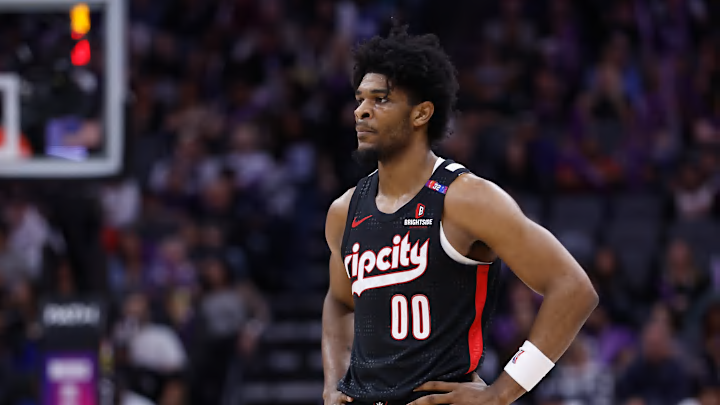Overall, Scoot Henderson has had an improved second season. He's shown flashes of having that All-Star ceiling that led the Portland Trail Blazers to invest a top-three selection into the G League Ignite product. However, inconsistent play remains a significant issue.
Henderson hasn't played since March 27th after suffering a concussion. He recorded just six points on 2-of-8 shooting in that blowout loss to the Sacramento Kings, a game Portland desperately needed to come away with to keep their play-in hopes alive (they are now officially eliminated with the Kings' recent win over the Cleveland Cavaliers).
Henderson was starting to turn a corner in 2025. From December to January, his scoring averages increased from 10.6 to 14.6, while his three-point percentage leaped from 28.2 to 43.8. Scoot's red-hot shooting carried over into February as well, connecting on 37.7 percent of his attempts beyond the arc.
Still, it was apparent that this level of shooting wasn't sustainable -- it was too good to be true and, at some point, would regress to the mean.
Teams have to be patient when developing young guards
That's what happened in March, with Henderson going 37.9 percent from the field and 31.1 percent from three. He's reverting back to the inefficient play that plagued him as a rookie, which even led some to prematurely declare him a bust.
Deni Avdija's star ascension is another factor. With him taking on more of a point-forward role, Henderson isn't prioritized as much in the offense. That's going to negatively affect any lead guard who is at his best with the ball in his hands, especially if his three-point shot isn't falling.
The Blazers' offense has been better off with Avdija as the go-to guy, as it's clear that Henderson isn't quite ready to take on that role. And that's perfectly fine. By now, the Blazers know they need to be patient with young guards entering the league.
It takes even the best guards time to adjust to the NBA. The Blazers' sideline has a prime example as Chauncey Billups went from being labeled a bust to being arguably the best player on the Detroit Pistons, winning Finals MVP in 2004.
Two-time MVP Steve Nash didn't even exceed ten points per game until he was 26 years old. There are plenty of other examples proving that teams need to be patient with the development of their young guards: Kevin Johnson, Darius Garland, Jordan Poole, Kyle Lowry, and the list goes on.
Henderson may have had a rough March, but he's still trending in the right direction overall as he's figuring out how to take two steps forward and one step back.
That star potential is still there -- once Henderson reaches it, everyone will forget about his early struggles.
